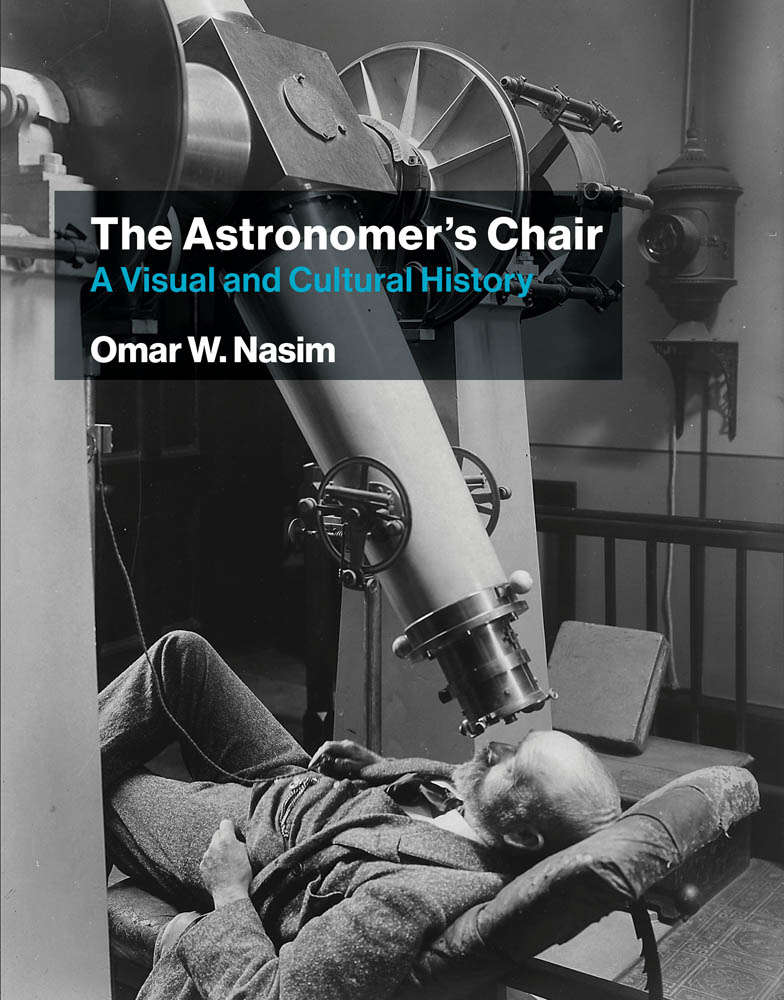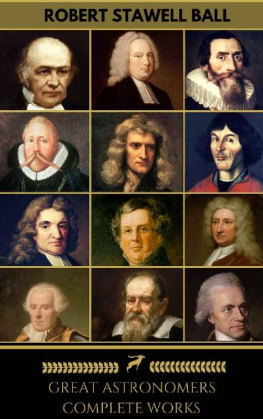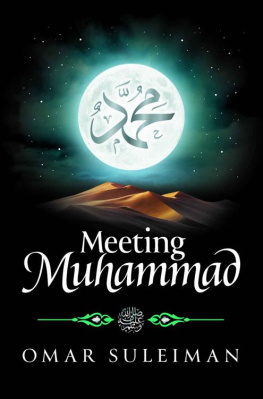Omar W. Nasim - The Astronomers Chair: A Visual and Cultural History
Here you can read online Omar W. Nasim - The Astronomers Chair: A Visual and Cultural History full text of the book (entire story) in english for free. Download pdf and epub, get meaning, cover and reviews about this ebook. year: 2021, publisher: MIT Press, genre: Romance novel. Description of the work, (preface) as well as reviews are available. Best literature library LitArk.com created for fans of good reading and offers a wide selection of genres:
Romance novel
Science fiction
Adventure
Detective
Science
History
Home and family
Prose
Art
Politics
Computer
Non-fiction
Religion
Business
Children
Humor
Choose a favorite category and find really read worthwhile books. Enjoy immersion in the world of imagination, feel the emotions of the characters or learn something new for yourself, make an fascinating discovery.

- Book:The Astronomers Chair: A Visual and Cultural History
- Author:
- Publisher:MIT Press
- Genre:
- Year:2021
- Rating:4 / 5
- Favourites:Add to favourites
- Your mark:
- 80
- 1
- 2
- 3
- 4
- 5
The Astronomers Chair: A Visual and Cultural History: summary, description and annotation
We offer to read an annotation, description, summary or preface (depends on what the author of the book "The Astronomers Chair: A Visual and Cultural History" wrote himself). If you haven't found the necessary information about the book — write in the comments, we will try to find it.
The Astronomers Chair: A Visual and Cultural History — read online for free the complete book (whole text) full work
Below is the text of the book, divided by pages. System saving the place of the last page read, allows you to conveniently read the book "The Astronomers Chair: A Visual and Cultural History" online for free, without having to search again every time where you left off. Put a bookmark, and you can go to the page where you finished reading at any time.
Font size:
Interval:
Bookmark:

The Astronomers Chair
A Visual and Cultural History
Omar W. Nasim
The MIT Press
Cambridge, Massachusetts
London, England
2021 Massachusetts Institute of Technology
All rights reserved. No part of this book may be reproduced in any form by any electronic or mechanical means (including photocopying, recording, or information storage and retrieval) without permission in writing from the publisher.
The MIT Press would like to thank the anonymous peer reviewers who provided comments on drafts of this book. The generous work of academic experts is essential for establishing the authority and quality of our publications. We acknowledge with gratitude the contributions of these otherwise uncredited readers.
Library of Congress Cataloging-in-Publication Data
Names: Nasim, Omar W., 1976- author.
Title: The astronomers chair : a visual and cultural history / Omar W. Nasim.
Description: Cambridge, Massachusetts : The MIT Press, [2021] | Includes bibliographical references and index.
Identifiers: LCCN 2020047211 | ISBN 9780262045537 (paperback)
Subjects: LCSH: Astronomy--Equipment and supplies--History. | Chairs--History. | Chair design--History. | Astronomical observing chairs
Classification: LCC QB85.8 .N37 2021 | DDC 522/.5--dc23
LC record available at https://lccn.loc.gov/2020047211
d_r0
To my wife
List of Figures
A relief originally made for Giottos Campanile in Florence in the workshops of Andrea Pisano, showing Gionitus, whom the thirteenth-century Florentine scholar Brunetto Latini considered to be the fourth son of Noah and the founder of astronomy. The relief is now housed in the Museo dellOpera del Duomo, Florence.
A frontispiece by Albrecht Drer to De scientia motus orbis (1504), a Latin translation of the Arabic work by the Persian-Jewish astronomer Mshallh ibn Athari (740815 CE). It portrays the astronomer seated in a specialized chair. Source: Typ 520.04.561, Houghton Library, Harvard University, via Wikimedia Commons.
An engraving by James Basire illustrating the transit room of Dr. John Lees Hartwell House observatory, where William Henry Smyth (17881865) often came to socialize and observe. Source: des Hartwellian; or, Notices of the Manor and Mansion of Hartwell (London, 1851).
Engraving of a drawing by Austen Henry Layard of a large bas-relief (236.22 200.66 cm) excavated by him near modern-day Mosul, Iraq. It portrays Neo-Assyrian King Ashurnasirpal II seated upon his throne, with footstool, during a court ceremony. Source: Austen Henry Layard, The Monuments of Nineveh, from Drawings Made on the Spot (London, 1849), plate 5.
A specialized marine chair devised to facilitate telescopic observations of Jupiter and its moons while aboard a moving ship in order to determine longitude. The chair was designed in 1757 by the German polymath Christian Gottlieb Kratzenstein (17231795). It was published in his Sella marina observandis eclipsibus satellitum Jovis accommodata, in Acta Literaria Universitatis Hafniensis (Copenhagen, 1778).
Photograph of the interior of Sydney Observatory (18621930) presenting two different seating arrangements for the equatorial telescope, mounted in the English manner. Source: Photographer unknown. Museum of Applied Arts and Sciences, New South Wales, Australia.
An astronomer shown seated at one of the observing chairs employed at the Paris Observatory. Illustration by Lon Bennett in Jules Verne, Lle hlice (Paris: J. Hetzel, 1895), 249.
Maria Mitchell at the Vassar College observatory. A rare nineteenth-century instance of a female astronomer depicted at the observing chair. Photographed by Henry Sherman Wyer in 1878, who printed postcards from it in the early part of the twentieth century. Reproduced with permission from the Division of Medicine and Science, National Museum of American History, Smithsonian Institution.
Henry Alfred Lenehan (18431908), one of the principal transit observers at his worn-out adjustable chair at the Sydney Observatorys transit circle. For a short period, Lenehan acted as the observatorys director. Source: Photographer unknown. Museum of Applied Arts and Sciences, New South Wales, Australia.
Hand-colored wood engraving of Tycho Brahe seated at the center of his observatory Uraniborg on the island of Hven. Source: Tycho Brahe, Astronomiae Instauratae Mechanica (Wandesburg, Germany, 1598). Courtesy of SLUB Dresden.
In this lithograph (1852) by T. H. Maguire, the Astronomer Royal, George Airy, is portrayed seated in a studio armchair while holding a telescopes eyepiece. Courtesy of Wellcome Collection.
Assistants at work with the Great Equatorial at the Royal Observatory at Greenwich, including one who is illustrated seated at the chair and observing. Source: Leisure Hour 11 (1862): 40.
The Northumberland Equatorial at Cambridge Observatory was designed, along with its iconic chair, by George B. Airy. Source: Detail from an engraving by James Basire in G. B. Airy, Account of the Northumberland Equatoreal and Dome Attached to the Cambridge Observatory (1844), plate XIX, figure 27.
The Troughton 10-foot Transit Instrument displayed with its mechanical chair. Source: Drawn by J. Farey, engraved by T. Bradley, and printed in William Pearson, An Introduction to Practical Astronomy (London, 1829), plate 16.
Plan of the Earl of Seftons country house, Abbeystead, which included zones of the house segregated by gender. Notice the separate staircase leading to a clutch of bachelor bedrooms above. Source: Mark Girouard, Life in the English Country House: A Social and Architectural History (New Haven, CT: Yale University Press, 1978), 298.
Drawing room and parlor chairs. Source: Thomas Sheraton, The Cabinet-Maker and Upholsterers Drawing-Book: In Three Parts (London, 1793), plate 31.
A number of subspecies of drawing room chairs, differentiated by material, form, function, and nation. Source: Thomas Webster, An Encyclopaedia of Domestic Economy (London, 1844), 247.
Ungraceful Positions, illustrated and explained. Source: T. E. Hill, Hills Manual of Social and Business Forms: A Guide to Correct Writing with Approved Methods in Speaking and Acting in the Various Relations of Life (Chicago, 1888), 148.
Christmas Presents for 1868, lithograph by Honor Daumier. Seated on her throne, Europe hands out weapons to all kinds of foreigners with diminutive stature. Source: Le Charivari, December 23, 1867. Courtesy of the Wellcome Collection.
Portrait of a phlegmatic. Source: Gaspard Lavater [Johann Kaspar Lavater], LArt de Connatre les Hommes Par La Physionomie, vol. 8 (Paris, 1807), 143, plate 487.
A man sitting erect in a chair; representing pride as a type of the sentiment of self-esteem, a phrenological faculty. Source: Engraving by Charles Devrits in Hippolyte Bruyres, La phrnologie: le geste et la physionomie (Paris, 1847), plate 48. Courtesy of Wellcome Collection.
A page from the English retailer Maple & Co.s French catalogue, exhibiting seat furniture decked out in Persian patterns. Source: Maple & Co., Catalogue Illustr dAmeublements (London, 1889), 14.
Anonymous British artist, English Interior in India
Font size:
Interval:
Bookmark:
Similar books «The Astronomers Chair: A Visual and Cultural History»
Look at similar books to The Astronomers Chair: A Visual and Cultural History. We have selected literature similar in name and meaning in the hope of providing readers with more options to find new, interesting, not yet read works.
Discussion, reviews of the book The Astronomers Chair: A Visual and Cultural History and just readers' own opinions. Leave your comments, write what you think about the work, its meaning or the main characters. Specify what exactly you liked and what you didn't like, and why you think so.









